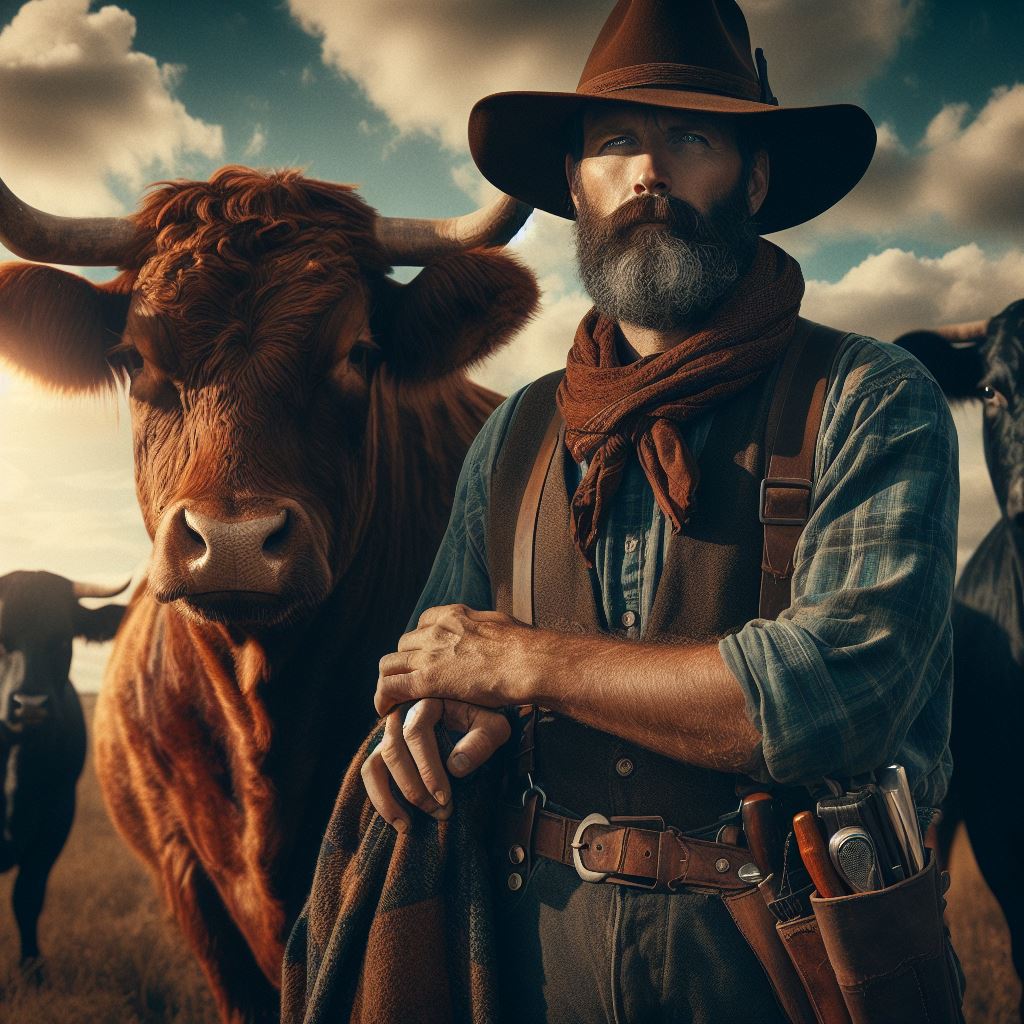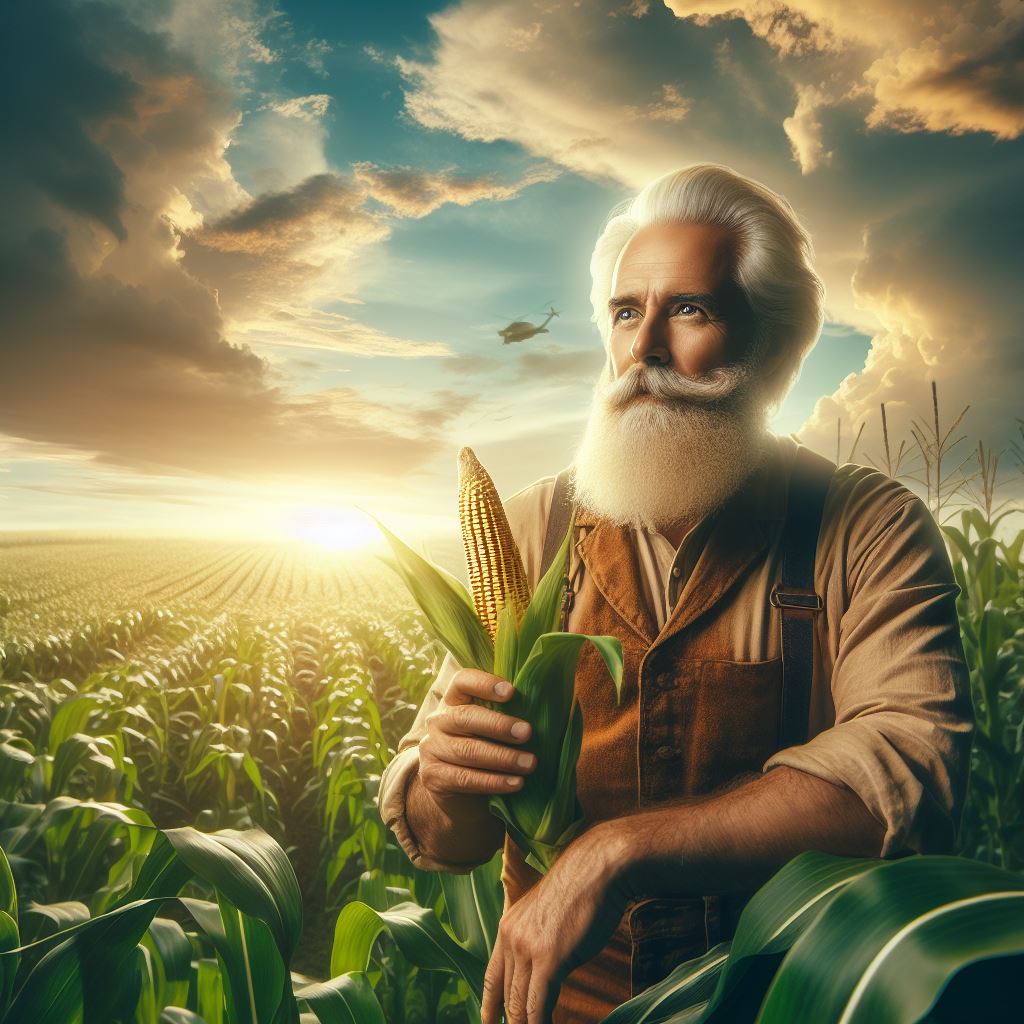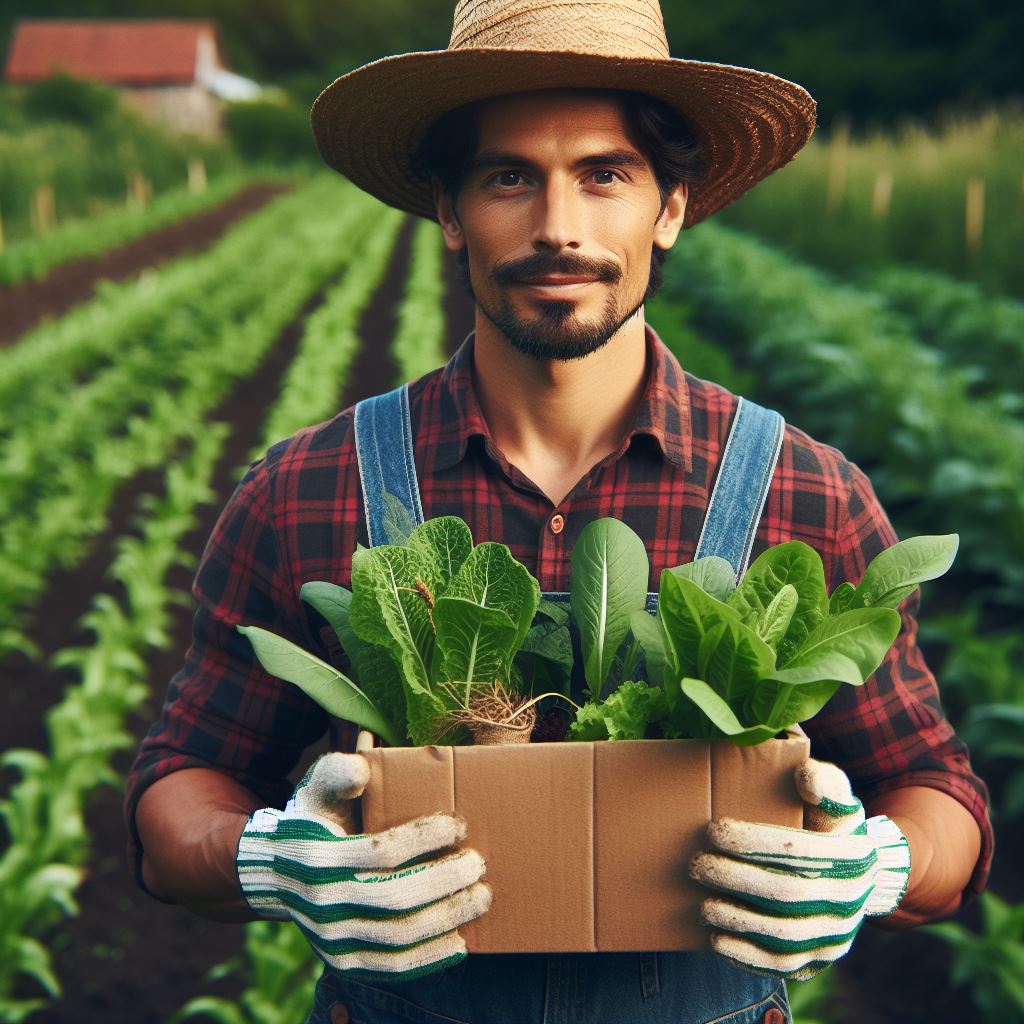Introduction
Cattle ranching is the practice of breeding and raising cattle for meat production and livestock trading.
The heritage of cattle ranchers spans more than a century and holds immense importance in the agricultural industry.
This blog post provides a brief overview of this topic.
Cattle ranching, simply put, involves the rearing of cattle primarily for beef production and other livestock products.
It is one of the oldest and most traditional agricultural practices in many parts of the world, particularly in rural communities.
The heritage of cattle ranchers encompasses the knowledge, skills, and traditions passed down through generations.
It plays a vital role in sustaining the agricultural industry by maintaining the production of high-quality meat and ensuring food security.
Over the past century, the cattle ranching industry has seen numerous changes and innovations.
Technological advancements have improved breeding techniques, animal health, and farm management practices, leading to increased productivity and profitability.
Despite the modernization, the core values and traditions of cattle ranching continue to be preserved and celebrated.
Ranchers take pride in their heritage and maintain a deep connection with the land and livestock.
The heritage of cattle ranching also contributes to the cultural identity of many regions.
It reflects the history, values, and way of life of rural communities, often characterized by a strong sense of independence, resilience, and a deep respect for nature.
Furthermore, the heritage of cattle ranching promotes sustainable land management practices.
Ranchers have a profound understanding of the ecosystems they work within and implement conservation strategies to ensure the long-term health of their lands.
In general, the heritage of cattle ranchers holds significant value in the agricultural industry.
It encompasses a wealth of knowledge, tradition, and cultural identity that contributes to the sustainability and prosperity of the livestock sector.
Historical Perspective
Origins of cattle ranching
Cattle ranching has a rich history that dates back thousands of years to the domestication of wild cattle.
The first evidence of cattle domestication can be traced back to around 6,500 BC in the region that is now modern-day Iraq.
As human civilizations developed, so did the practice of cattle ranching, spreading across different regions.
Development of cattle ranching in different regions
In medieval Europe, cattle ranching became an integral part of the feudal system, providing economic stability to the lords.
In the Americas, Spanish explorers introduced cattle to the continent, establishing large-scale ranching operations.
As settlers moved west during the expansion of the United States, cattle ranching flourished on the vast open plains.
In Australia, cattle ranching emerged as an important industry in the 18th century, driven by the demand for beef and leather.
Transform Your Agribusiness
Unlock your farm's potential with expert advice tailored to your needs. Get actionable steps that drive real results.
Get StartedImpact of cattle ranching on local economies and communities
Cattle ranching plays a significant role in the economies of many regions, contributing to employment and income generation.
Local communities that depend on the cattle industry experience economic growth and development.
Cattle ranching also fosters a sense of cultural identity and heritage, as it has been passed down through generations.
Furthermore, ranching communities often develop strong bonds and support networks, creating a tight-knit community.
With its economic and social significance, cattle ranching has shaped the landscapes and cultures of many regions.
The industry’s impact extends beyond direct economic benefits, as it supports related sectors such as transportation and retail.
Cattle ranching also has environmental effects, with land management practices influencing biodiversity and ecosystem health.
Efforts are being made to ensure sustainable ranching practices, balancing economic growth with environmental conservation.
Overall, cattle ranching has played a crucial role in shaping the history and development of communities around the world.
The heritage of cattle ranching is a testament to the resilience and adaptability of those who have dedicated their lives to it.
By understanding the historical perspective of cattle ranching, we can appreciate the importance of preserving this rich heritage for future generations.
Read: Fencing Fields: A Sheep Farmer Diary
Evolution of Cattle Ranching Practices
Cattle ranching has a rich heritage that spans over a century, and throughout the years, the practices and techniques employed by ranchers have evolved significantly.
This section explores the evolution of cattle ranching practices from traditional methods to embrace technological advancements and scientific principles.
Traditional methods and techniques
1. Cattle breeds and their suitability for different environments
In the early days of cattle ranching, ranchers relied on specific breeds that were well-suited for the local environment.
They carefully selected cattle breeds that could withstand harsh climates, resist diseases, and thrive in the available forage and grazing conditions.
2. Grazing and forage management
Livestock grazing techniques were crucial in ensuring the well-being of the herd and the sustainability of the land.
Ranchers practiced rotational grazing, moving the cattle from one pasture to another to prevent overgrazing and allowing the vegetation to regenerate.
Forage management involved monitoring the availability and quality of grass and other edible plants.
Ranchers ensured that the cattle had access to sufficient forage while also implementing measures to preserve the natural resources and prevent soil degradation.
3. Roundups and branding
The iconic image of cowboys rounding up cattle on horseback is ingrained in the history of cattle ranching.
Roundups were essential for several reasons, including branding and identification, health checks, and transport of cattle to market or new grazing areas.
Brandings served as a permanent mark of ownership and a means to prevent cattle theft.
Ranchers developed unique symbols that were applied to the animals using hot irons while also taking into consideration animal welfare and minimizing pain.
Technological advancements in cattle ranching
1. Introduction of mechanization and modern equipment
As technology advanced, the introduction of machinery allowed for greater efficiency and productivity in cattle ranching.
Tractors and other mechanized equipment made tasks such as hay production, water distribution, and feeding more manageable and time-efficient.
The use of vehicles and trailers facilitated the transportation of cattle over long distances, reducing stress on the animals and improving overall transportation logistics.
2. Role of genetics and selective breeding
Advances in genetics and selective breeding revolutionized the cattle industry.
Ranchers began using scientific knowledge to breed cattle with desirable traits, such as increased milk production, meat quality, or disease resistance.
This resulted in improved overall herd genetics and increased profitability.
3. Adoption of scientific principles for herd management
Cattle ranchers started incorporating scientific principles into their management practices.
They embraced research and studies to optimize nutrition, reproduction, and disease prevention.
This scientific approach helped in making informed decisions regarding cattle health and well-being, resulting in healthier and more productive herds.
In short, the evolution of cattle ranching practices showcases the ingenuity and adaptability of ranchers throughout history.
Traditional methods laid the foundation for sustainable ranching, while technological advancements and scientific principles have contributed to increased efficiency and productivity.
Cattle ranching continues to evolve as ranchers strive to balance tradition with innovation in the pursuit of a prosperous future.
Read: Sowing Hope: Farming in Changing Climes
Showcase Your Farming Business
Publish your professional farming services profile on our blog for a one-time fee of $200 and reach a dedicated audience of farmers and agribusiness owners.
Publish Your Profile
Challenges Faced by Cattle Ranchers
Cattle ranching, although deeply rooted in tradition and heritage, faces a multitude of challenges in the modern world.
These challenges encompass environmental, economic, regulatory, and policy issues that significantly impact the livelihoods of cattle ranchers.
Environmental issues
Environmental issues are among the primary challenges faced by cattle ranchers.
Droughts and water scarcity pose significant threats to the well-being of both ranchers and their cattle.
During dry spells, ranchers struggle to provide sufficient water for their herds, leading to potential health and productivity issues.
Additionally, climate change has brought about unpredictable weather patterns, negatively affecting the availability and quality of grazing land.
Ranchers must adapt and find alternative methods to sustain their herds.
Economic challenges
In terms of economics, cattle ranchers face various challenges.
Fluctuating market prices for cattle and beef products create uncertainty in revenue streams.
Ranchers often face price volatility, which can significantly impact their profitability and financial stability.
Moreover, the rising costs of production, including expenses for feed, veterinary care, and equipment, put additional pressure on ranchers’ bottom line.
The increasing expenses reduce profit margins and hinder ranchers’ ability to invest in their operations.
Furthermore, the rise of industrialized farming methods presents a significant challenge to cattle ranchers.
Large-scale operations utilizing advanced technologies and economies of scale can often outcompete smaller ranching businesses.
The industrialized approach offers cost advantages, higher production volumes, and streamlined processes, putting traditional cattle ranchers at a disadvantage.
Ranchers must find innovative ways to differentiate their products and appeal to consumers seeking ethically raised and sustainably sourced beef.
Regulatory and policy challenges
Cattle ranchers are also confronted with regulatory and policy challenges.
Land use regulations and conservation efforts restrict ranchers’ ability to expand or modify their grazing areas.
These regulations aim to protect natural resources and preserve ecological balance but may limit ranchers’ flexibility in managing their herds.
Additionally, strict animal welfare standards and certification requirements must be met to ensure cattle are treated humanely.
Compliance with these standards is essential to maintain consumer trust and access certain markets but can pose logistical and financial challenges for ranchers.
To overcome these challenges, cattle ranchers must embrace innovation and adaptability.
Implementing sustainable water management practices, such as capturing rainwater or utilizing water-efficient technologies, can help address droughts and water scarcity.
Ranchers can also explore climate-resilient grazing systems and adopt practices that restore and conserve grazing land.
To mitigate economic challenges, ranchers can establish strong relationships with buyers, diversify their income streams, and explore value-added initiatives, such as direct sales or marketing premium products.
They can also collaborate with other ranchers and agricultural organizations to collectively address market fluctuations and negotiate better prices.
Overcoming regulatory and policy challenges requires active engagement in shaping policy discussions and advocating for fair regulations.
Ranchers can participate in conservation programs and work closely with government agencies to find solutions that balance environmental concerns with the economic viability of their operations.
In fact, the challenges faced by cattle ranchers highlight the need for resilience and adaptability in the face of evolving conditions.
By addressing environmental, economic, regulatory, and policy challenges, ranchers can safeguard their livelihoods and continue their proud heritage for generations to come.
Read: Tractor Tracks: Innovations in Farming
Sustaining Heritage and Tradition
Importance of preserving family-owned ranches
- Family-owned ranches play a vital role in preserving the rich heritage and tradition of cattle ranching.
- These ranches have been passed down through generations, carrying the stories and values of the past.
- Preserving family-owned ranches ensures the continuation of agricultural practices and cultural values.
- The connection to the land and animals is deeply ingrained in the families who own these ranches.
Efforts to maintain traditional cattle ranching practices
- Despite the challenges of modernization, many cattle ranchers are committed to maintaining traditional practices.
- Traditional methods of cattle ranching focus on sustainable land management and animal welfare.
- Ranchers strive to maintain open grazing systems, rotational grazing, and natural resource conservation.
- These efforts promote biodiversity, reduce environmental impact, and ensure the long-term viability of the industry.
Role of education and mentorship programs in passing down knowledge
- Education and mentorship programs play a crucial role in transferring knowledge from experienced ranchers to the next generation.
- Young individuals interested in cattle ranching can benefit from formal education in agriculture and animal science.
- Mentorship programs provide hands-on experience and guidance from experienced ranchers.
- Passing down knowledge ensures that the traditional skills and techniques of cattle ranching are preserved.
Supporting local and sustainable beef production
- Consumers can contribute to the sustainability of cattle ranching by supporting local and sustainable beef production.
- Purchasing beef from family-owned ranches helps maintain the economic viability of these operations.
- Local beef production reduces the carbon footprint associated with transportation and supports the local economy.
- Consumers can choose beef from ranches that prioritize animal welfare and environmental stewardship.
In a nutshell, sustaining heritage and tradition in the cattle ranching industry is crucial for preserving the cultural significance and environmental sustainability of this practice.
By valuing family-owned ranches, maintaining traditional practices, investing in education, and supporting local and sustainable beef production, we can ensure the continuation of this hundred-year-old heritage for generations to come.
Read: Fruits of Labor: A Citrus Grower Tale
Conclusion
Cattle ranchers have a deep-rooted heritage that spans a hundred years.
Their contributions to our society cannot be underestimated.
Through their hard work and dedication, they have shaped the landscape and economy of many regions.
However, the industry is facing numerous challenges.
With rapid modernization, traditional ranching practices are being replaced by large-scale industrial farming.
Climate change poses another threat, with extreme weather conditions affecting grazing lands and water sources.
To preserve this important heritage, we must take action.
Supporting local ranchers by purchasing locally sourced beef and other products can make a significant difference.
By doing so, we ensure that cattle ranchers can continue their work and pass down their knowledge and traditions to future generations.
Moreover, educating ourselves and others about the challenges faced by cattle ranchers is crucial.
This includes understanding the importance of sustainable practices and advocating for policies that support the industry.
By spreading awareness, we can encourage more people to appreciate and support cattle ranchers.
In summary, the heritage of cattle ranchers is invaluable.
The challenges they face cannot be ignored.
It is up to each of us to take action, promote sustainable practices, and support these hardworking individuals.
By doing so, we ensure the conservation of their heritage and the continued existence of this vital industry.




